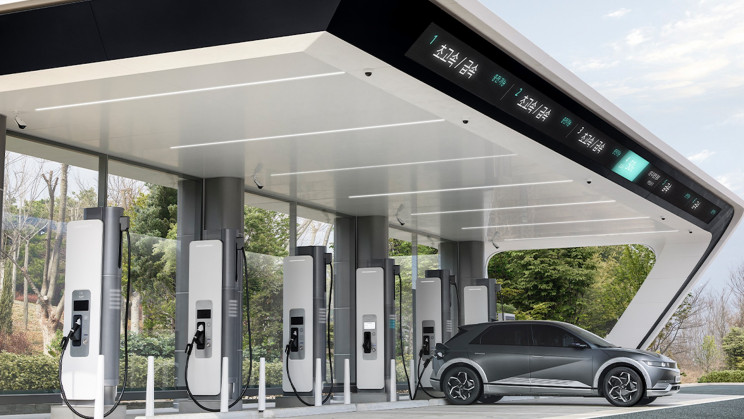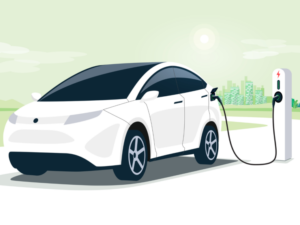Electric Vehicle; Complete Guide for First-time Buyers

Electric Vehicle; You have decided to take the plunge into the world of electric vehicles; it’s incredibly exciting! It is also extremely daunting to consider all the factors that go into buying an electric vehicle.
And surveys show that at least two-thirds of American drivers are willing to buy an electric vehicle. Many people still have concerns about cost, options, and pricing, but those hurdles are falling fast, and President Biden hopes to speed things up with tens of billions of dollars in incentives.It can seem overwhelming and exciting to someone in the market for a car. This is how you should determine if an electric vehicle is right for you.
For many people, an add-on like a Chrysler Pacifica Hybrid minivan or the RAV4 Prime S.U.V. it could effectively serve as an all-electric vehicle, he said. Toyota claims the RAV4 Prime can go 42 miles before switching to gas, while Chrysler claims the Pacifica gets 32 miles on a full charge. While they are primarily used for short trips and city trips, cars can rarely run on gasoline. Both vehicles and other plug-in hybrids are also eligible for federal tax credits.
How much battery life do you need? Where are you going to load it?
This article is designed to be a comprehensive guide to choosing your first EV, making the process as easy as possible. Here’s everything you need to know to buy your first electric vehicle.
What type of electric vehicle should I buy?
The term EV, for electric vehicles, encompasses all types. In this article, the acronym EV will refer to these three main categories of electric vehicles. Here are the differences between the three main categories of electric vehicles on sale today.
Fully Electric Vehicle
Fully electric vehicles are exactly what you think of when the term EV or electric car comes up in conversation. These vehicles only run on their batteries and electric motor, without a conventional combustion engine. This is the most exciting category of electric vehicles in the world at the time of this writing. Startups like Rivian are making incredibly fast and capable electric trucks, and big names in the auto industry like Volvo, BMW, and Ford are also launching their own fully electric vehicles.
All-electric vehicles have an average range of 250 miles at the time of this writing and can be charged through home chargers as well as numerous charging networks across the country.
Hybrids
Hybrids combine a regular internal combustion engine with an electric motor. Toyota made hybrids mainstream when it released the Prius, which gets an incredible 50 mpg. Hybrids are also a perfect entry into the world of electric vehicles. You won’t need to recharge them as regenerative braking recharges their batteries, so refueling is the same as driving a normal internal combustion engine car. Due to their popularity, hybrids are widely available from various automakers, from Toyota to Porsche.
Plug-in Hybrids
Plug-in hybrids are an excellent compromise between a normal gasoline car and a fully electric vehicle. These hybrids allow you to drive them like a normal hybrid car, automatically switching between the electric motor and the gasoline engine, without the need to recharge the batteries; however, that means you’ll be using the combustion engine more often, which defeats the purpose of PHEVs.
These hybrids can travel around 30 miles per charge in their all-electric modes. They’re great for those with shorter commutes. PHEVs allow drivers to have a backup combustion engine when needed for longer trips, minimizing range anxiety.
Electric Vehicle Range

The range is one of the most important considerations when choosing an electric vehicle. While this is an important factor when choosing a gas-powered vehicle, it’s less of an issue due to the overwhelming number of gas stations across the country; it also takes only a few minutes to refuel. If you are considering buying a plug-in hybrid or a fully electric vehicle, it will be extremely important that you pay attention to it.
According to the US Department of Energy, plug-in hybrids can run on electricity alone for 15 to 60 miles, a fairly short distance. However, this is exactly why plug-in hybrids also have an internal combustion engine. For example, the 2021 Volvo XC60 Recharge T8 Plug-In Hybrid has an electric range of around 20 miles, but adding the gas tank increases its range to over 500 miles.
The average range of fully electric vehicles has steadily improved over the last decade. At the time of this writing, the average range for all-electric vehicles on the market today is around 250 miles, according to Energy.gov. It’s a range similar to that of gasoline cars on the street, and it only gets better with time.
where to recharge
Now that you know how far you can go with each EV, it’s time to figure out where to charge them.
Home chargers
Plug-in hybrids don’t need huge batteries to power the entire vehicle, so they are quite small and therefore charge quickly. Volvo says its plug-in hybrids, like the XC60 Recharge, can reach full capacity in three to four hours with a 3.6kW charger, or in four to eight hours when plugged in via a 220 household wall socket. V. In each of these scenarios, charging your EV overnight via a home charger would be the solution, as you don’t have to worry about charging as fast as possible.
Plug-in hybrids can also be charged using regenerative braking, so unless you need a fully charged battery at the start of each day, you don’t even need to charge your PHEV at home.
A fully electric vehicle, on the other hand, needs to be charged in the same way that you would need to refuel a gasoline vehicle. Like having a PHEV, the best option is to charge an all-electric vehicle at home. Installing a Level 2 home charger, like the ChargePoint Home Flex, will cost around $700 and can charge your all-electric vehicle overnight, adding around 30 miles of range per hour. Rated around 40 amps, level 2 home chargers tend to produce between 9 and 10 kW.
Public Charging Networks

If you’re on the go and need to recharge, fast chargers are your best friend and are available from various charging networks.
Tesla has been rapidly ramping up its network of superchargers for years. Tesla wants all its vehicle owners to be free from range anxiety by providing 30,000 global superchargers, including 1,200 in the United States; Their chargers are also very fast, making them incredibly convenient on the go. For example, Tesla summarizes that its superchargers can add 200 miles in about 15 minutes.
Even if you don’t opt for a Tesla, you have several other options, like Electrify America. It has fast chargers even faster than Tesla’s superchargers, some of which can produce 350kW for capable vehicles. As of this writing, Electrify America has 670 charging stations (approximately 2,900 individual CCS fast chargers) available in the United States.
The most common fast chargers support up to 150kW, which, according to to Electrify America, can “add about 7.5 miles of battery range per minute for capable vehicles. There are several other charging networks around the world, so EV range anxiety is slowly waning.
Driving Experience
One of the best parts of owning an electric vehicle is experiencing the high speeds and exceptional handling previously reserved for sports cars and luxury sedans. One characteristic of electric motors is that all available torque is available as soon as your foot hits the accelerator, making for a very quick 0-30 mph time if you’re used to driving a gas-powered vehicle. This is true for a $30,000 Chevy Bolt or a $95,000 Tesla Model S. 0-60 mph times will be different, and it definitely shows, but it’s great that everyday people are having fun driving their new EVs, whether they’re car enthusiasts or not.
Performance may also depend on the specific vehicle you get. The Toyota Prius hybrid uses a type of continuously variable transmission (CVT) that produces a wheezing and slow acceleration; the Prius is designed to maximize fuel economy above all else. Automakers known for their driving experiences, such as BMW and Porsche, build their hybrid and fully electric vehicles with driving dynamics first. EV performance is about more than power and drivetrain, so test drives your favorite EVs before you pull the trigger.
Regenerative braking is common in all types of electric vehicles. As soon as you ease off the throttle, the car feels like it’s braking rather than coasting. This will be off-putting to many people, which is why most EVs allow you to change the brake sensitivity as needed. Hybrid regenerative braking tends to resemble coasting, while fully electric vehicles can come to a complete stop simply by taking your foot off the accelerator. No matter what type of electric vehicle you choose, you should have so much fun behind the wheel that you won’t even miss your gas-powered car.
The costs
To buy
The costs of buying a new EV vary by model. Electric vehicles are generally more expensive than gasoline or diesel equivalents. However, we expect the spread to narrow as electric vehicles become more common.
Interview
Maintenance costs for electric vehicles are likely to be 20-35% lower than for an equivalent petrol or diesel vehicle. This is due to the relatively simple nature of the transmission and the reduced brake wear due to regenerative braking implemented in most vehicles.
cost per mile
The cost of charging your electric vehicle from a home charging unit will be around 3-4 pence per mile. This compares favorably to the equivalent ICE vehicle, which would normally cost between 11 and 15 pence per mile. However, if you use the specialist fares available, the cost per mile can be reduced to 1-2 pence per mile! As V2G technology becomes more widespread, there will be an opportunity to make money from the vehicle as a storage facility, although this is not widely available
Is an electric vehicle for you?
Fully electric vehicles may not be suitable for everyone. The range of some models is less than that of an ICE vehicle. Therefore, understanding how you plan to use your vehicles is essential before making a decision. Electric vehicles lend themselves better to urban environments with low mileage, low speed, and stop-start driving.
However, advances in battery technology size and efficiency have provided longer potential ranges. The standard Tesla Model 3 has a range of 254 miles with the long-range version up to 348 miles between charges.
Should you buy an electric vehicle?
Absolutely! Every time you buy a new car, it’s like starting a new chapter in your life. Buying an all-electric vehicle has several benefits, like never having to pay for gas again and getting a discount on your car through federal tax credits. The range is as good as or even better than gas vehicles, depending on what you choose, and it’s even faster and more fun to drive than other gas vehicles in its class.
Pull the trigger on your next electric vehicle and never look back.
Q&A
What factors should you consider when buying an electric car?
- Ensure that the passenger room and cargo space meet your needs. …
- Make sure the electric-car driving experience is to your liking.
What is the biggest problem with electric cars?
Cost. It’s obvious: EVs are currently somewhat more expensive than ICE vehicles for a variety of reasons (carmakers trying to recoup R&D costs, lack of significant government incentives to encourage adoption, expensive batteries), which is an obstacle for many consumers.
Are EV tires more expensive?
Electric vehicle tires cost more than similar car tires and can wear out faster than expected for 3 reasons: Electric vehicles are slightly heavier than the equivalent car. This means you need tires with a higher weight rating and they will wear out a bit quicker.
Does the EV need an oil change?
As in these vehicles, a hybrid’s engine requires regular oil changes to prevent overheating and maintain engine health. Thus, a hybrid vehicle requires motor oil, but an electric vehicle does not.
Read more;


